In today’s online world, digital marketing is essential for every business, no matter the industry or size. Without having a strategy or a digital marketing plan, it’s as if you’ve sailed on a vast ocean without a map in hand! This could be overwhelming, and to think that we will be welcoming the new year full of uncertainty, we are still holding on to a bright and positive outlook as we arm ourselves with these marketing tips and techniques.
Maximize Return During Tough Times Through Testing


We are living in a fast-moving time with new technology, ever-evolving social and political landscapes, and a pandemic on top of that. Any predictions about what to expect in 2020 for marketers was no doubt lightyears off what we’re experiencing now.
So what can we learn from this year as we move forward? You can bet things will continue to change and evolve in unpredictable ways. What worked last year might not work now. Heck, what worked last week might not work next week! How, then, can you be sure you’re getting the most out of your marketing efforts?
Evolving and finding opportunities
There are a few ways you can try to stay on top of things. No matter what, having a strategy for post-COVID is important.
Learn from others
For one, pay attention to those around you. Learn from your peers and competitors. Some may be sharing: read blogs, watch webinars, consume all you can in your space. But you can uncover even more by doing things like conducting a competitive analysis of other sites, advertising messaging, advertising spend, and content creation.
Learn from yourself and adapt
Pay attention to your own analytics and results closely. Take in what you are seeing and adapt. Have a willingness to branch out and pivot strategy based on what the data is telling you. Again, something that worked before may not be working now, and vice versa.
Always. Be. Testing.
Knowing for sure what is going to work for your business, in your space, and at this particular time is a tough task. So the only way to find out for sure and stay on top of the changing trends is testing. We’re all vulnerable right now — and any time tough circumstances fall on us. Figuring out a new course of action, whether it is macro marketing decisions or micro adjustments, is key.

https://moz.com/blog/maximize-return-through-testing
How Misspelled Keywords Affect SEO
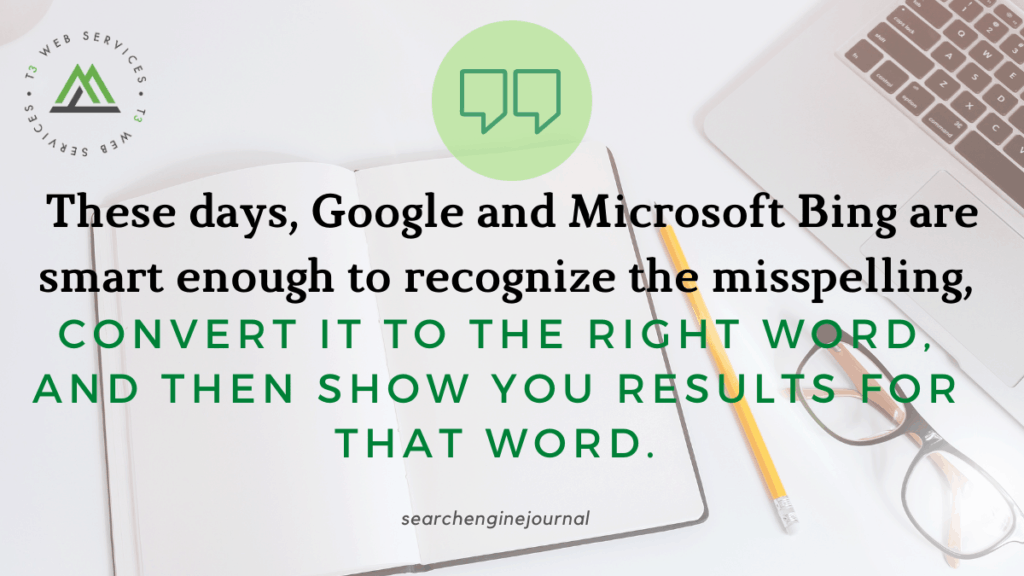

Algorithms are constantly getting updated to give searchers the best user experience. Is using misspelled keywords still a valid strategy for SEO? Find out here.
Today’s Ask an SEO question comes from Frank in Phoenix. Frank asks:
Targeting misspelled keywords used to be a common strategy in search engine optimization. Is this still a valid strategy in your opinion? Or is it super outdated? Is there any reason to target misspellings today, or would it be a waste of time? Could it hurt SEO in anyway?
Great question, Frank.
I love to talk about the evolution of SEO from tricks and tweaks to real marketing, and this is a great example of that.
In the pre-Google days of SEO, search was really simple.
The algorithms weren’t super-advanced, and were basically just a fancy way of saying “give me all the documents that contain this exact phrase, and order them by how many times it appears.”
The search engines even gave us a meta keywords tag so we could tell them what keywords the page was relevant for.
Seriously it was such a big volume (and heavily spammed) search term that it’s literally one of the examples Google uses when they talk about misspellings and understanding them today (more on that in a minute.)
Because of all that abuse by SEO pros, and because of huge advancements in the fields of information retrieval and NLP, no reputable search engine uses meta keywords anymore.
If you’re curious about what words are most often misspelled in each state, Google has shared that data too.
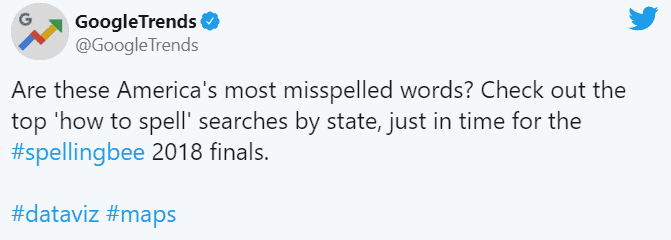
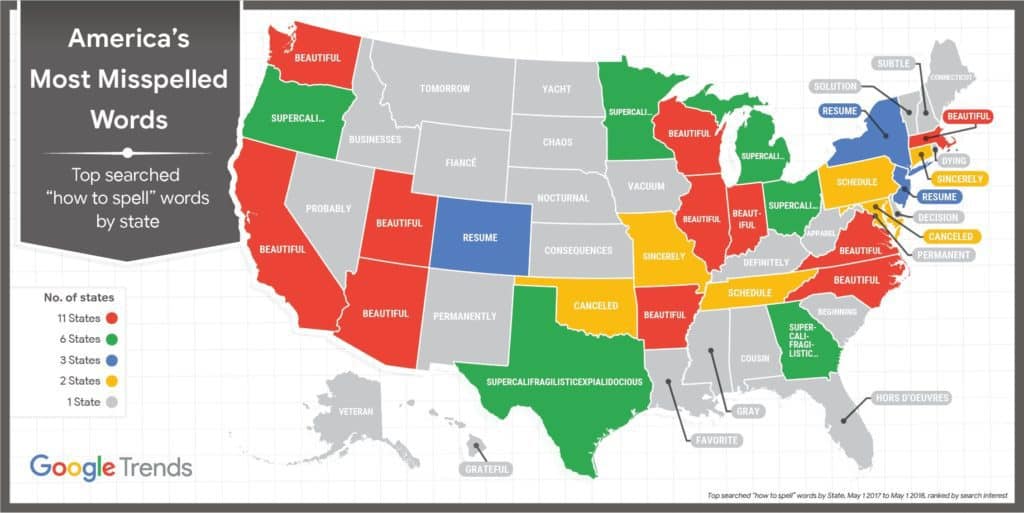

https://www.searchenginejournal.com/how-misspelled-keywords-affect-seo/386704/
The Future of SEO Lies in the “Messy Middle” of the Purchase Journey
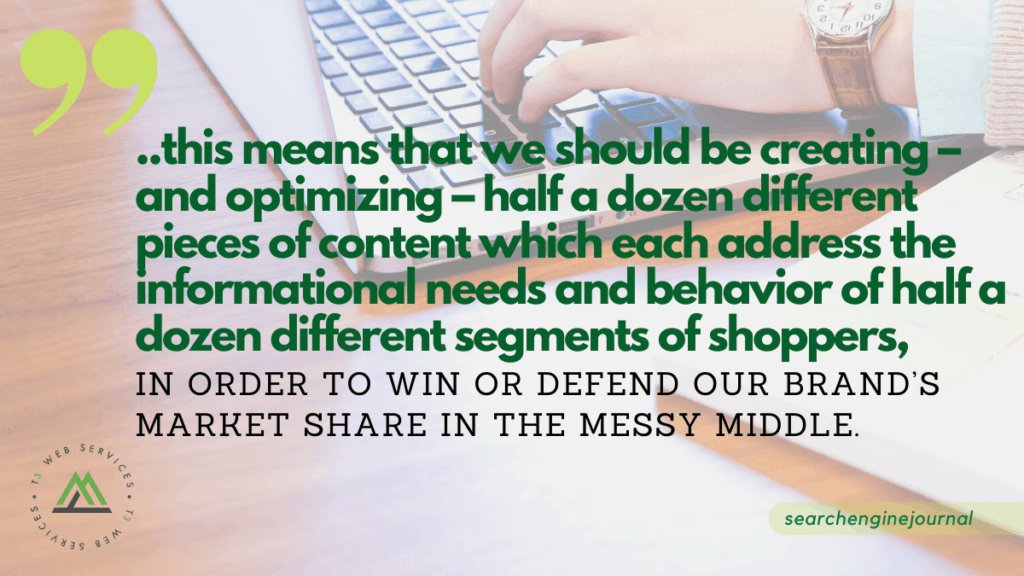

The “messy middle” is where people decide what to buy, according to research by Google’s Market Insights team in the U.K.
Now, I wish that this vision of where SEO is headed in 2021 and beyond was mine. If I’d figured this out on my own, then I could charge big bucks to share this knowledge and wisdom with others.
But, alas, this blinding flash of strategic insight arrived as I was reading “How people decide what to buy lies in the ‘messy middle’ of the purchase journey,” which was published in Think with Google back in July 2020.
The article was written by Alistair Rennie and Jonny Protheroe, who work on Google’s consumer insights team in Great Britain. This 1,000-word article is actually a summary of their team’s 98-page report, which is entitled, “Decoding Decisions: Making Sense of the Messy Middle.”
Here’s the gist:
“People don’t make decisions in a neat, linear fashion. A lot happens between the moment they realize they have a need or a desire for something and the moment they make a purchase,” write Rennie and Protheroe.
They call this “complex space between triggers and purchase, where customers are won and lost,” the messy middle. They also report the findings of their team’s research on how consumers behave in this messy middle. And they conclude, “It’s more important than ever for brands to learn how to make sense of it.”
I recognized instantly that the “messy middle” was a big idea.

https://www.searchenginejournal.com/seo-messy-middle-purchase-journey/390575/
9 Video Storytelling Tips to Engage Your Audience
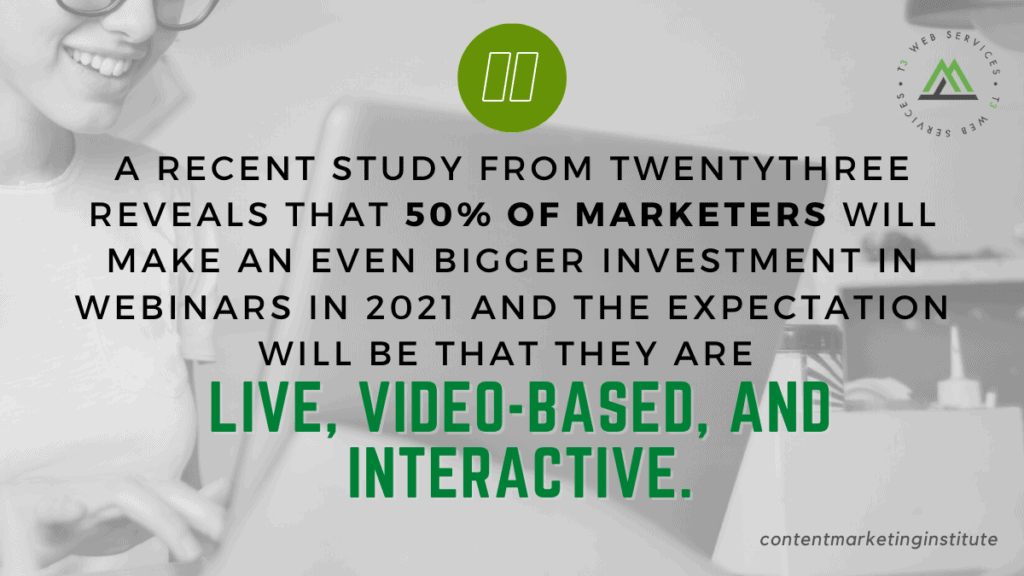

Tip 1: Repurpose and promote content with video
You did the hard work of researching, writing, editing, and designing to create your written content. Video lets you amplify it in new ways. “(Video storytelling) has the opportunity to be more emotional and to spark humor, to create inspiration, to make people really want to reengage,” says Tyler Lessard, vice president of marketing at Vidyard.
Tip 2: Cut the sales pitch
“Unleash (your customer’s) story, not your story,” Tyler says. As an example, he points to Genesys’ CX Heroes videos on YouTube, some of which he says will bring you to tears.
This one tells the story of a digital services manager at Telefonica, the largest communications provider in Mexico, who helped her colleagues through an earthquake that struck Mexico City in 2017. After the earthquake, she mobilized executives and IT to relocate the company’s contact center to an undamaged building and had customer services reps back online within hours.
“They’re the kinds of stories you just want to go out and share with people, but they’re not testimonials. They’re unlocking the story of some of those key customers and how it is that they’ve come to be, the challenges they face, how they’re seeing success without it being a product placement ad for you,” Tyler explains.

https://contentmarketinginstitute.com/2020/12/video-storytelling-tips-engage-audience/
How To Do Local SEO for Businesses Without Physical Locations in 2021
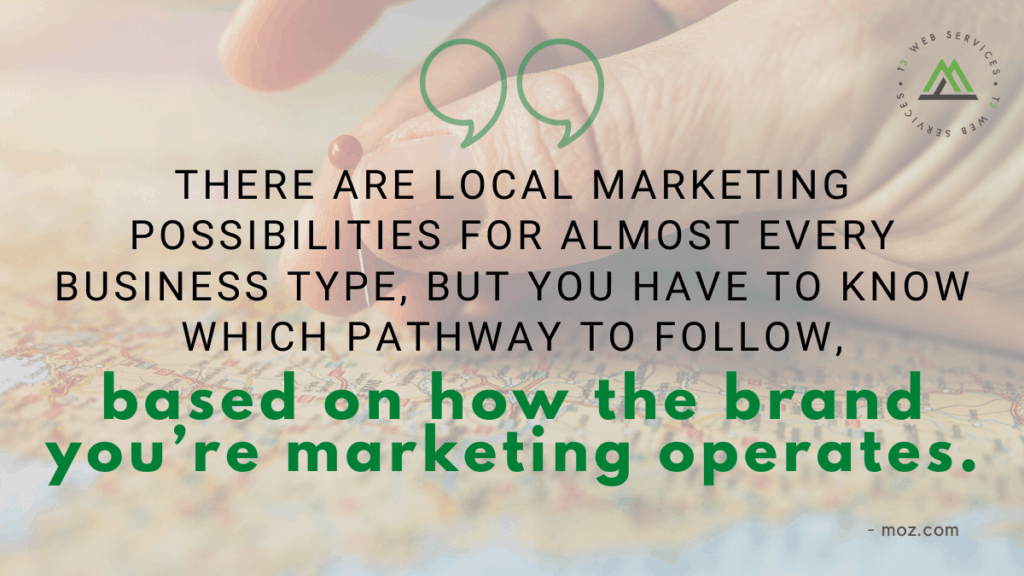

Business owners and marketers who haven’t serendipitously discovered Google’s various guidelines are left wondering how to promote non-brick-and-mortar brands. Even where there’s awareness that such guidance exists, Google is continually evolving its stance. It’s easy to make mistakes, overlook updates, and miss out on opportunities.
1. Service Area Business (SAB)
Most home services (plumbing, landscaping, housekeeping, etc.) fall into this category. You may or may not have physical street addresses that serve as headquarters or offices, but the defining feature of your business is that you serve nearby customers face-to-face at their locations, not at yours.
2. Home-based business
Your home address is your physical location, and you may either serve nearby customers at your house (like a daycare center), or go to nearby customers to serve them (like a dog walker), or you might do a combination of both (like a yoga teacher who teaches some classes at their home studio and some as private appointments at clients homes). The defining feature of your business is that you’re working out of your house.
*If you work from home but don’t ever meet face-to-face with customers for delivery or fulfillment of any kind, then you don’t fall under this category; you fall under category 3.
3. Virtual business
You conduct all transactions virtually, via phone, computer, shipping, and other remote means. Your business may be e-commerce (like the Dollar Shave Club), or offer digital services (like Credit Karma), or sell via print catalogue or other remote methodology. You may be operating out of one or more physical addresses and want to get the attention of customers in various regions or cities, but no customers ever come to your locations. The defining feature of your business is that you never interact in-person with customers.

https://moz.com/blog/local-seo-without-physical-locations
2021 Outlook for Digital Marketing Agencies: the future is bright
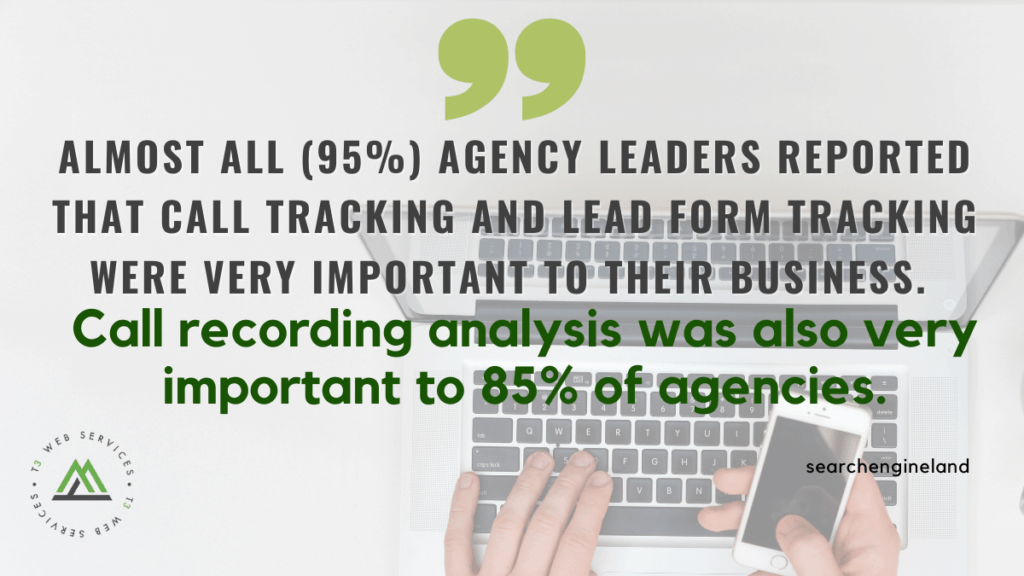

Agencies 2021 financial outlook is strong
In CallRail’s survey, 88% of agencies indicated they are satisfied to extremely satisfied with their agency’s financial health. Only 3% were extremely unsatisfied. In line with these findings, most agencies also anticipate exceeding their 2019 revenue by the end of 2020.

Due to the shift to digital channels during the pandemic, Kyle Shurtz, vice president of performance at Avalaunch Media, reported an increase in business. “Because we focus strictly on online advertising, we had more business come through as people shifted from offline to online. We anticipate 2021 to be much more of the same. Our goal is to grow by about 20% year-over-year.”
Even for those agencies who saw a decline in revenue in the spring or whose business models are more mixed between online and offline advertising, there’s still been a silver lining to 2020. Molly Randolph, vice president of client services at The Barbauld Agency, said the pandemic forced them to look at their business and make decisions they wouldn’t have made otherwise.
“We became more profitable because our overhead shrunk so much. But, we would never have gotten rid of our offices or our subscriptions. We would have let them linger without COVID,” said Randolph.
Dale Powell, managing director of Atomic Marketing, concurs. “We had a lot of time to think about the direction of our business and the types of clients we wanted to work with,” says Powell. “So we made some educated decisions to move pricing up and take a more firm hold to say ‘this is our price,’ which has eliminated the time wasters.” Powell also predicts that his agency’s revenue will exceed last year’s.

https://searchengineland.com/2021-outlook-for-digital-marketing-agencies-the-future-is-bright-344617
How to Stop Your Website from Showing to People in Irrelevant Areas
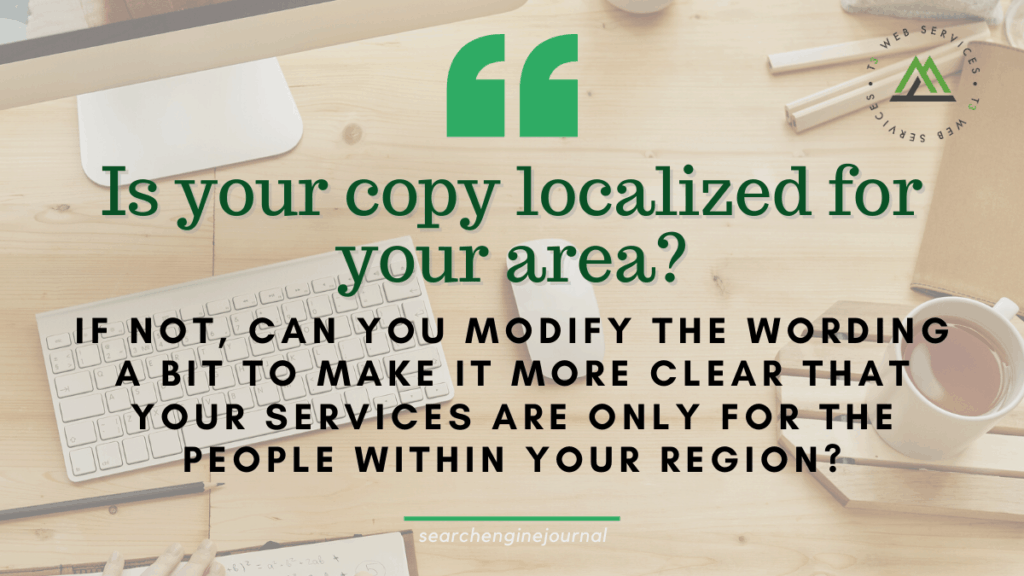

Today’s Ask an SEO question comes from Janet in Brisbane. Janet asks:
“How do I stop a webpage from ranking so well, without deleting it? It’s bringing lots of traffic from the U.S., which isn’t relevant as the site is for a local business. Is the page that has gone crazy harming the rest of my site in search engine results, or helping?”
Great question Janet!
Without knowing your specific situation I cannot say if it’s hurting or helping the rest of your search engine results.
However, I can help you with a few ways to stop your website from showing to people in irrelevant areas.
Please be careful, though, as there could be some unwanted side effects.
Make Your Area Served Clear
The first thing you can do is look at your schema. There is an “area served” feature you could claim.
By defining the city, town, county, country, district, etc. you serve, you’ll signal to search engines that this is the only area your content or services is relevant for.
Next, log in to Google My Business and place the same location and area served information.

https://www.searchenginejournal.com/stop-webpage-from-ranking/373897/?ver=373897X3


Leave a Reply